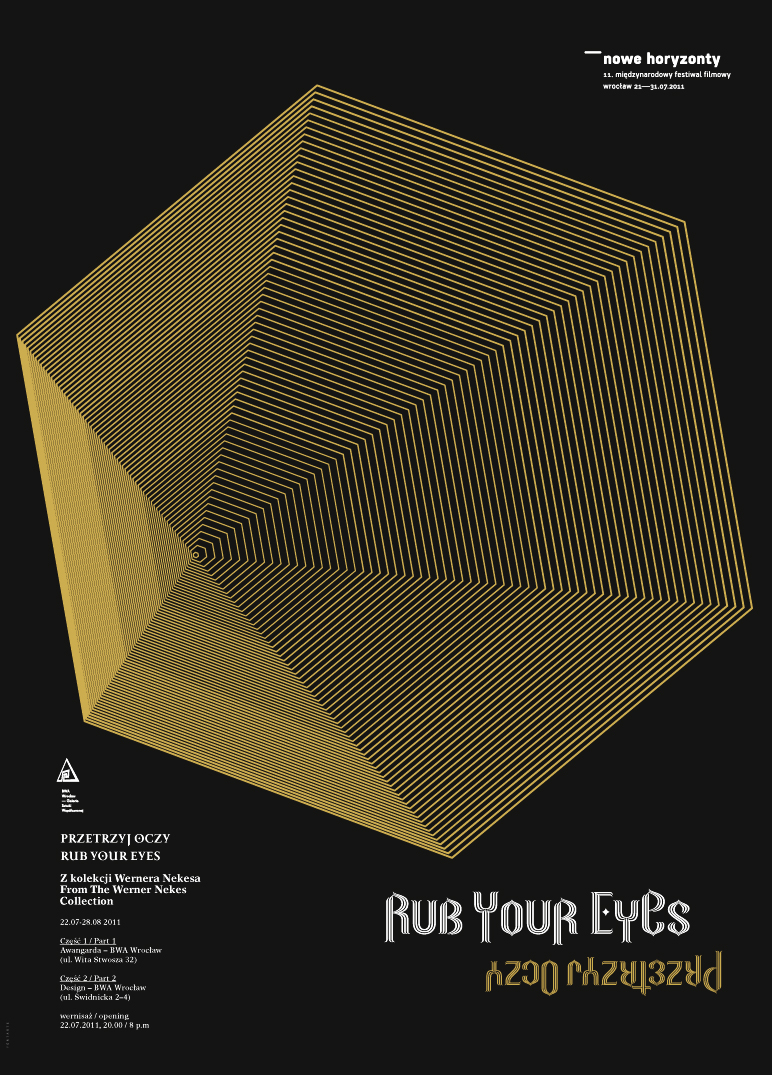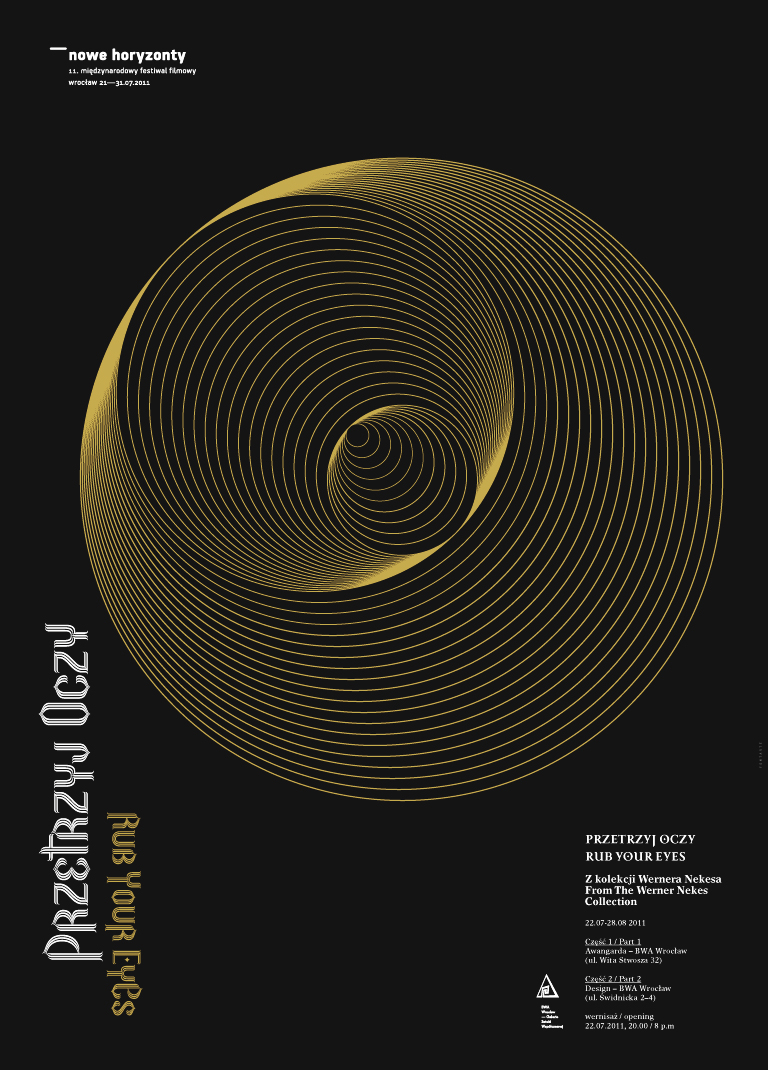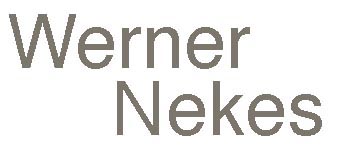Rub your eyes
RUB YOUR EYES
From the Werner Nekes Collection
22.07-28.08.2011
Part I
Awangarda Gallery
ul. Wita Stwosza 32
Part II (discreet show)
Design Gallery
u. Świdnicka 2-4
opening on Friday, 22 July at 8.00 pm
curators: Werner Nekes i Katarzyna Roj
with cooperation with: Jonathan Nekes i Marta Kubik

Werner Nekes is a representative of European film experimentalists. He was born in Germany in 1944, at the age of 27 he already ran his own curriculum of classes in Hochschule für bildende Künste in Hamburg. At the beginning of the 1970s, Nekes, despite his young age, stood out from the German film avantgarde. In his first projects he experimented with classic film narration and psychology of sight. These experiences led him towards the so-called “archeology” of cinema – inventions from the distant past which preceded the emergence of cinematograph. Interested in magic, optics, paradoxes of sight and the art of illusionism, he studied tradition of the forgotten techniques of film construction and screening. Laterna magica, camera obscura and other instruments which allow to capture reality in all its dramaturgy, served as an inspiration for his own artistic work. Todayhis collection of protocinematographic objects is one of the largest in the world. It is kept in a inactive leather factory in Mülheim near Ruhr River, which is at the same time Nekes’ film studio and the place where he lives.
The exhibition in Awangarda gallery shows the part of the collection which is strongly connected with prehistory of cinema. The viewer may be surprised with Nekes’ wide scope of interests; attempts to present the heart of his collection may be difficult. It covers both works of art (da Vinci, Rembrandt, Duchamp, Dürer…) and stunning presentations of scientific discoveries, voyeuristic machines, automata and visual toys which once served as an attraction for salons, parlours as well as circuses and funfairs. These objects illustrate paradoxes of sight, optic experiments such as anamorphosis, refraction of perspective, relationships of light and shadow as well as hidden pictures. Most of the objects show early forms of animation, while the purpose of others is to confuse the viewer. A large part of them contains elements of eroticism. However, the viewer has to know rules of functioning of the objects, their secret code, to experience visual satisfaction. Objects from this group, presented as part of “the discreet show” in Design gallery, also point to an interesting connection between early animation practices and erotic fantasies of their authors.
Nekes is a collector overwhelmed by the passion of possessing and especially by the passion of knowledge, including the secret one. Undoubtedly, the feature which distinguishes his collection from others is an enormous number of books, among which an important position certainly has Ars Magna Lucis et Umbrae by Anthasius Kircher, the second edition from 1671 in which for the first time in history was presented the magic lantern (laterna magica), an invention considered today to be the first protocinematograph. It is hard to indicate its inventor in the mists of time, although Christiaan Huygens, a Dutch astronomer and mathematician, is commonly regarded to have constructed it. His first experiments with glass slides concerned, among others, the subject of vanitas. It is worth mentioning that in 15th century Giovanni Fontana, a Venetian inventor and magus, used less advanced lantern for the projection of Demon. One can notice in these first actions an interesting aspect of the prehistory of cinema – its bond with diabolic iconography.
Every exhibition of Werner Nekes Collection is considered by experts as a significant worldwide event in the circle of experts. It is also an extraordinary experience for enthusiasts and hobbyists. The collection was shown before in prestigious galleries and museums of Europe (among others, Museum Ludwig in Cologne, Hayward Gallery in London), Japan and the United States, and each time it fascinated crowds of sightseers. The objects require only one thing – rubbing your eyes and freeing from perceptive habits.
Katarzyna Roj
The exhibition accompanies 11. International Film Festival NEW HORIZONS
21–31.07.2011
www.nowehoryzonty.pl
The Project is implemented as part of the Culture Season of North Rhine- Westphalia in Poland 2011/2012
www.sezon-kultury-tamtam.pl
All exhibits belong to Werner Nekes Collection
www.wernernekes.de

